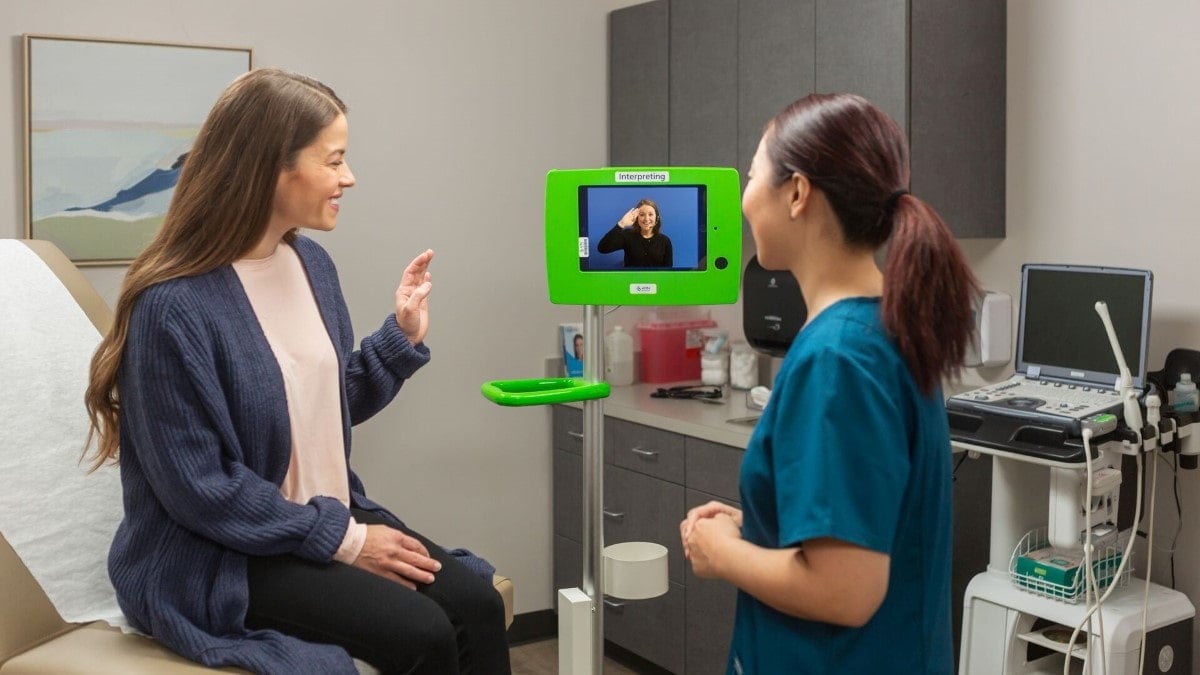
5 Ways to Improve Language Access in Healthcare
With one in five people in the U.S. speaking a language other than English at home, the need to improve language access in healthcare is clear. But for hospitals and health systems, systematically addressing the communication needs of patients while still delivering safe, high-quality patient care can be a challenge.
To provide the best possible support for patients who are limited-English proficient (LEP), deaf, or hard of hearing, here are five ways you can help improve your language access program:
1. Always Use a Qualified Medical Interpreter.
When an LEP, deaf, or hard-of-hearing patient has a medical appointment, providers are legally required to make arrangements for a medically qualified interpreter. But despite these laws, it’s not uncommon for staff or physicians to use an untrained bilingual employee or a family member of a patient who speaks the patient’s language.
In addition to potential HIPAA violations and increased liability for providers, the use of untrained interpreters can create significant challenges in accurately communicating important information to patients.
One study found that non-professional, ad hoc interpreters can misinterpret or omit up to half of a physician’s questions.1 Compared to the use of a professional interpreter, the errors and omissions committed by untrained interpreters were significantly more likely to have potential clinical consequences.
2. Educate Staff on the Risk of Noncompliance.
Providers use untrained interpreters because it’s often perceived as the “path of least resistance ” – a quicker, easier alternative to connect patients with a professional interpreter.2 However, failing to engage a medically qualified interpreter can come with significant legal repercussions.
By not facilitating timely access to high-quality language services, providers may be in danger of legal and regulatory consequences stemming from noncompliance with federal and state laws, including Title VI of the 1964 Civil Rights Act.
Historically, hospitals and health systems have been held liable when poor interpretation results in a medical mistake, misdiagnosis, or other serious patient safety event. This can leave providers vulnerable to medical lawsuits – some of which may not be covered by malpractice insurance because they are considered a violation of the patient’s civil rights.
To avoid noncompliance, staff and physicians should be trained in how to obtain a professional interpreter for their patient(s) and be continually reminded that LEP patients have a legal right to access health care in their preferred language.
3. Weigh Your Interpretation Options.
Most language services offer a range of interpretation options .3 To improve language access in healthcare, it’s important that providers understand how and when to use each option:
- Onsite Interpretation: In-person interpretation is a great option for hospitals and health systems that frequently treat LEP (Limited English Proficiency) patients. Technological advancements have expanded interpretation options in healthcare, yet certain scenarios necessitate the presence of an interpreter. Moreover, in sensitive situations such as delivering bad news or supporting individuals with disabilities, such as the Deaf community, physical presence allows interpreters to provide emotional support and navigate complex interactions more effectively.
- Audio Interpretation: With over-the-phone interpretation, providers can gain immediate access to interpreters in hundreds of languages. However, audio-only interpretation also has its limitations. Studies indicate anywhere between 55% to 93% of all communication is non-verbal. Dr. Albert Mehrabian, author of Silent Messages, conducted several studies on nonverbal communication. Through his research, he discovered that just 7% of any message is conveyed through words; 38% through certain vocal elements; and 55% through nonverbal elements (facial expressions, gestures, posture, etc.).
- Video Remote Interpretation (VRI): VRI combines the benefits of face-to-face interpretation with the on-demand nature of over-the-phone interpretation. For this reason, many hospitals and health systems are implementing VRI to provide both verbal and non-verbal means of communication at a fraction of the cost of onsite interpretation. Not only does VRI offer instant, mobile, and cost-effective access to interpreters, but it can also help improve clinical effectiveness, enhance the patient experience, and drive operating efficiencies.
4. Train Providers to Work with Interpreters.
Engaging a qualified medical interpreter is the first step in bridging the language gap between patients and providers. But studies have also shown that training staff and providers to work with interpreters is another way to improve the effectiveness of communication with LEP patients.4 This training can include exercises on how to speak in short, clear sentences, and instructing physicians to avoid medical jargon whenever possible. Not only do these best practices improve the patient experience, but providers with interpreter training are more satisfied than others with their ability to communicate with LEP patients.
5. Insist on Experienced Interpreters.
We’ve already established that qualified medical interpreters should always be used during LEP patient encounters. But even among professional interpreters, experience matters.
One study found that professional interpreters who received at least 100 hours of training in medical interpreting had nearly two-thirds fewer errors than those with less training.5 Of those errors, the proportion with potential clinical consequences was 2% for interpreters with 100 hours of training, compared with 12% for interpreters with less training. This difference in interpreter quality is one reason why AMN Language Services only works with experienced interpreters that specialize in medical interpretation alone.
Improve Outcomes with Expert Interpreters
While other interpretation and translation companies work across a variety of industries, AMN Healthcare Language Services only serves healthcare customers. Our specialized focus and high standards for interpreter quality ensure you receive timely, accurate interpretations and translations. To learn how our experienced medical interpreters can help you, visit www.amnhealthcare.com/language-services.
1Flores G, Laws MB, Mayo SJ, et al. Errors in Medical Interpretation and Their Potential Clinical Consequences in Pediatric Encounters. PEDIATRICS. 2003;111(1):6-14. doi:https://doi.org/10.1542/peds.111.1.6
2Juckett G, Unger K. Appropriate Use of Medical Interpreters. American Family Physician. 2014;90(7):476-480. https://www.aafp.org/pubs/afp/issues/2014/1001/p476.html
3Types of Interpreters: Benefits & Limitations. Geriatrics. Published February 12, 2014. https://geriatrics.stanford.edu/culturemed/overview/assessment/interpreter_types.html
4Masland MC, Lou C, Snowden L. Use of Communication Technologies to Cost-Effectively Increase the Availability of Interpretation Services in Healthcare Settings. Telemedicine and e-Health. 2010;16(6):739-745. doi:https://doi.org/10.1089/tmj.2009.0186
5Interpreters in the ED: A Look at Errors & Consequences. Physician’s Weekly. Published August 29, 2012. Accessed November 28, 2019. https://www.physiciansweekly.com/emergency-department-interpreter-errors/




